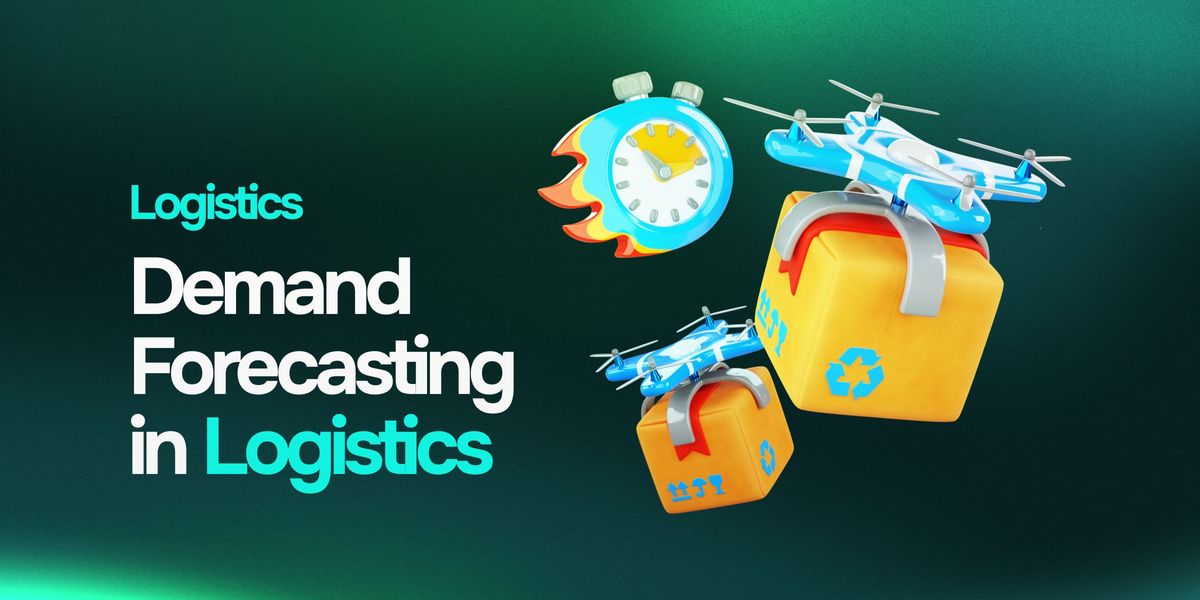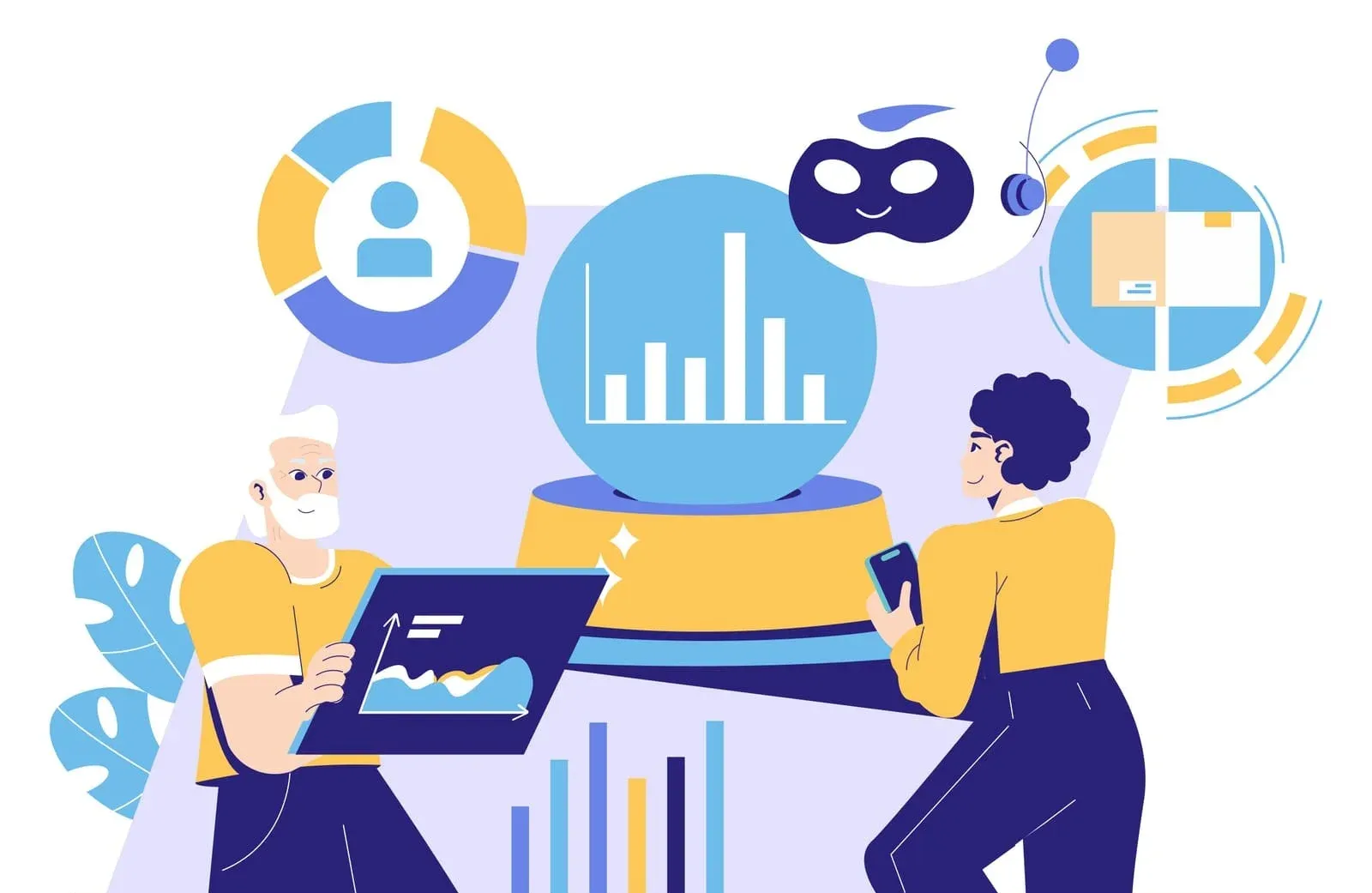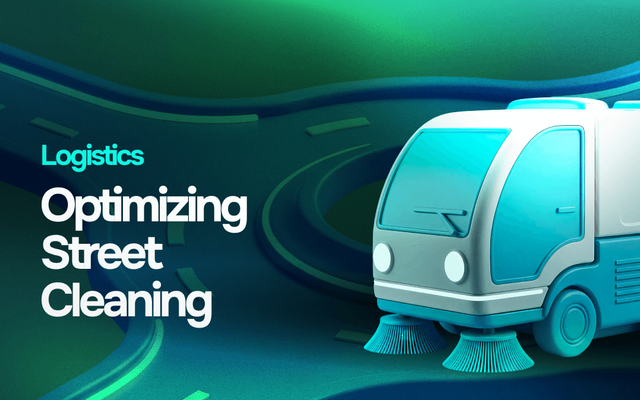
Amazon's success didn't happen by accident. The retail giant uses sophisticated demand forecasting algorithms that process over 150 different factors to predict what customers will buy. This precision allows them to position inventory closer to customers before orders are even placed, achieving their famous delivery speeds while keeping costs manageable.
The logistics industry is facing a wake-up call. According to McKinsey research, companies with advanced demand forecasting capabilities reduce inventory costs by 10-15% while improving service levels by up to 20%. Meanwhile, businesses still relying on gut instinct and basic spreadsheets are burning money on rushed deliveries and missed opportunities.
Demand forecasting in logistics isn't just about avoiding those embarrassing "out of stock" moments anymore. It's become the difference between thriving and merely surviving in a world where customer expectations keep climbing and profit margins keep shrinking.
Understanding Demand Forecasting in Logistics and Supply Chain Management
Demand forecasting in logistics and supply chain management goes way beyond just looking at last year's sales numbers and hoping for the best. It's basically becoming a fortune teller, but one that uses data instead of crystal balls.
Think of it as a sophisticated process that combines historical sales data, market trends, and predictive analytics to figure out what customers will want next. But it's not just about the "what" - it's also about the "when" and "where" that makes all the difference in logistics operations.
Key Elements of Effective Demand Forecasting
Modern demand forecasting logistics systems are like well-oiled machines with several moving parts that need to work together perfectly. Getting any one piece wrong can throw off your entire operation.
Data Collection: This is your foundation - and we're talking about way more than just sales figures. Smart companies pull information from point-of-sale systems showing real-time purchasing patterns, customer relationship management platforms with buying behavior insights, market research about industry trends, external economic indicators like employment rates, and even social media analytics that reveal emerging product interests.
Trend Analysis: This involves digging into historical patterns to spot cyclical behaviors and seasonal changes. The key is learning to tell the difference between a temporary blip (like a viral TikTok trend) and a real shift in what people want. Good trend analysis helps you understand whether demand changes are permanent or just noise.
Predictive Analytics: This is the most advanced piece, using machine learning to crunch massive amounts of data and spot patterns that humans would miss. These systems get smarter over time, learning from their mistakes and improving their predictions with every new data point they process.
External Factor Integration: Modern forecasting doesn't happen in a vacuum. The best systems incorporate weather forecasts, economic news, competitor activities, and even social sentiment to provide more complete demand predictions that account for real-world influences on customer behavior.
Role Within the Supply Chain Ecosystem
Demand forecasting logistics works like the brain of your supply chain operation, sending signals to every other part of the business. When it works well, everything runs smoothly. When it doesn't, chaos follows.
In procurement, accurate forecasts help buyers know exactly how much raw material to order and when to order it. No more panic buying at premium prices or sitting on inventory that nobody wants.
Warehouse teams use forecasting data to figure out staffing levels, plan equipment needs, and organize storage space. Transportation departments rely on these predictions to book the right amount of shipping capacity and plan efficient routes.
The ripple effect goes everywhere - from how much space you rent in distribution centers to how many customer service reps you need during busy seasons.

The Importance of Demand Forecasting in Logistics for 2025 and Beyond
The business world has gotten pretty crazy lately, and that's putting it mildly. What used to be predictable seasonal patterns now get thrown off by everything from social media trends to global supply chain hiccups. Companies that can roll with these changes are the ones that survive and thrive.
Adaptability to Change
Global events keep reshaping how and what people buy, often in ways nobody saw coming. Remember how the pandemic turned everyone into amateur bakers overnight? Flour and yeast suppliers who had good forecasting systems were able to ramp up production quickly, while others missed out on massive sales opportunities.
Consumer behavior changes faster than ever now. A single viral video can create massive demand spikes for products that were barely selling the week before. At the same time, environmental concerns are pushing people toward sustainable alternatives, changing long-established buying patterns.
Supply chain disruptions have become so common that they're basically part of doing business now. Weather events, labor disputes, and political tensions regularly mess with logistics operations. Companies with solid forecasting can spot these problems coming and prepare backup plans before their competitors even realize there's an issue.
Competitive Advantage Through Superior Forecasting
Organizations that nail their demand forecasting get some pretty sweet advantages that add up over time. Better inventory positioning means they can fulfill orders faster and more reliably than competitors, which keeps customers happy and coming back.
Cost savings are another huge benefit. When you're not constantly scrambling to expedite shipments or clear out excess inventory, those savings really add up. Plus, you can reinvest that money into better customer service or competitive pricing.
Market responsiveness becomes your secret weapon when you can quickly spot and capitalize on new trends. While your competitors are still figuring out what's happening, you're already positioned to capture market share.
Building Supply Chain Resilience
Good demand forecasting works like an early warning system for your supply chain. When you notice unusual patterns or unexpected changes in demand, you can dig deeper to figure out what's causing them and take action before small problems turn into major headaches.
Risk management becomes much easier when you have reliable forecasts. You can determine the right amount of safety stock to keep, set up backup supplier relationships, and create alternative distribution plans. Companies with better forecasting maintain service levels during disruptions while using fewer resources for emergency planning.
Long-term planning gets a major boost, too. When you can trust your demand forecasts, you make smarter decisions about where to locate facilities, how much capacity to build, and which technologies to invest in. These decisions shape your competitive position for years down the road.

How Demand Forecasting is Transforming Logistics Operations
Advanced technology and data analytics are completely changing how logistics companies predict demand. What used to take weeks of manual analysis now happens in real-time, and the accuracy keeps getting better.
These changes are reshaping everything from strategic planning to daily operations, creating new opportunities for companies that can adapt quickly.
Data-Driven Decision Making
Real-time data has revolutionized the forecasting game. Instead of waiting for monthly reports, logistics managers can now see what's happening as it unfolds and adjust their predictions accordingly.
Modern systems pull data from everywhere - not just traditional sales channels but also web analytics, social media sentiment, and even IoT sensors in delivery trucks. This complete picture helps explain not just what's happening, but why it's happening and what it means for future demand.
The best part? Predictive models now factor in external influences like weather forecasts, economic news, and competitor moves. This broader view leads to much better decision-making across all logistics functions.
Automation in Forecasting Processes
AI and machine learning have transformed demand forecasting from a manual, time-consuming process into an automated system that works around the clock. These technologies don't just make forecasting faster - they make it significantly more accurate.
Machine Learning Integration: These systems can chew through massive datasets and spot complex patterns without breaking a sweat. What's really impressive is that they keep learning from new data, constantly adjusting their models as market conditions change. They don't get tired, don't have bad days, and don't miss subtle signals that human analysts might overlook.
Automated Response Systems: When forecasting systems integrate with existing logistics platforms, they can trigger automatic responses like generating purchase orders when stock levels hit certain thresholds, transferring inventory between locations based on regional demand shifts, adjusting delivery routes when demand patterns change, and scaling warehouse staffing up or down based on volume predictions.
Real-Time Adjustments: Modern automated systems monitor multiple data streams continuously and can update forecasts instantly as new information becomes available. This means your predictions stay current instead of becoming outdated the moment market conditions shift.
Error Reduction: Automation eliminates the human errors that creep into manual forecasting processes. No more typos in spreadsheets, missed data updates, or inconsistent calculation methods across different team members.
Optimized Inventory Management
Accurate demand forecasting has transformed inventory management from a guessing game into a precise science. Companies can now balance service levels with carrying costs much more effectively.
Multi-location inventory optimization uses demand forecasts to figure out exactly where to position stock across the entire distribution network. Instead of keeping the same inventory everywhere, smart companies put fast-moving items closer to high-demand areas and keep slower items in centralized locations.
Safety stock calculations have gotten much more sophisticated, too. Instead of using blanket percentages across all products, modern systems adjust buffer inventory based on:
Forecast uncertainty for each specific item
Required service levels for different customer segments
Lead times from suppliers
Historical variability in demand patterns
Seasonal planning becomes incredibly precise when forecasting systems can predict not just that demand will increase, but exactly when it will peak and how long it will last. This helps logistics teams prepare the right staffing levels and secure enough warehouse space without overcommitting resources.
Future Trends Shaping Logistics Demand Forecasting
The demand forecasting field keeps getting more sophisticated as new technologies emerge and become accessible. Understanding where things are headed helps logistics professionals prepare for what's coming next.
AI and Machine Learning Advancement: These technologies are becoming more powerful and accessible, letting smaller companies access forecasting capabilities once limited to big enterprises. Cloud-based platforms provide sophisticated tools without massive upfront investments, while deep learning algorithms spot complex patterns traditional methods miss.
Sustainability Integration: Environmental concerns are influencing how companies approach demand forecasting. Sustainability metrics are being built into forecasting systems alongside financial measures, helping companies balance green logistics initiatives with service requirements and costs.
Real-Time Forecasting: Real-time data feeds are creating systems that adjust instantly based on current conditions. These systems monitor multiple data streams continuously and update forecasts as new information arrives, while edge computing enables faster processing closer to data sources.
IoT Integration: IoT sensors provide incredible visibility into product movement, customer behavior, and operational performance. This real-time information enables more accurate and responsive forecasting, giving companies unprecedented insight into supply chain dynamics.
Natural Language Processing: Advanced NLP lets forecasting systems analyze unstructured data like news articles, social media posts, and customer reviews to predict demand shifts. This means forecasting can incorporate market sentiment and emerging trends that don't appear in traditional sales data.
Preparing for the Future of Logistics Demand Forecasting
Demand forecasting in logistics has moved from being a nice-to-have planning tool to an essential competitive advantage. Companies that get serious about forecasting set themselves up for success, while those that keep winging it will struggle to keep up.
The importance of demand forecasting in logistics will only grow as customer expectations continue rising and supply chains become more complex. The organizations that treat forecasting as a core business capability rather than just a support function will be the ones that thrive.
Success requires commitment to data-driven decision making, cross-functional collaboration, and continuous improvement. Companies that make these investments will find themselves better prepared to serve customers, optimize operations, and maintain profitability regardless of market conditions. The future belongs to logistics organizations that can predict and respond to changing demand patterns faster and more accurately than their competitors.







